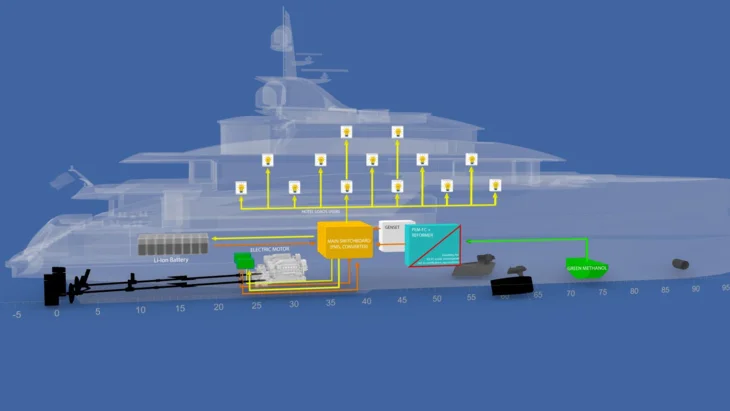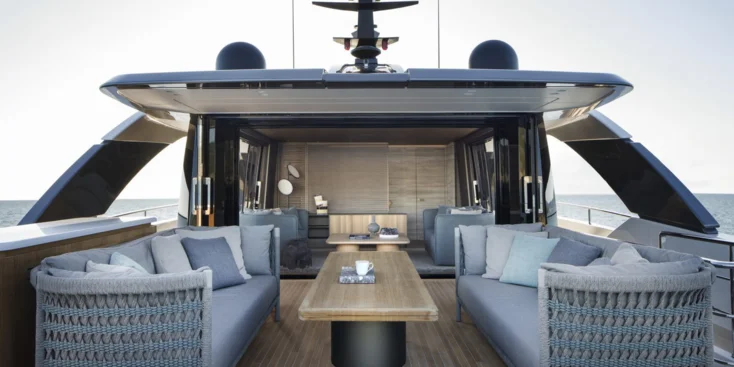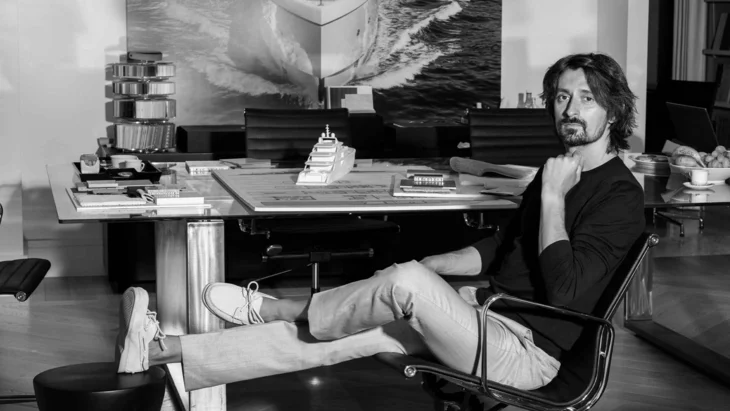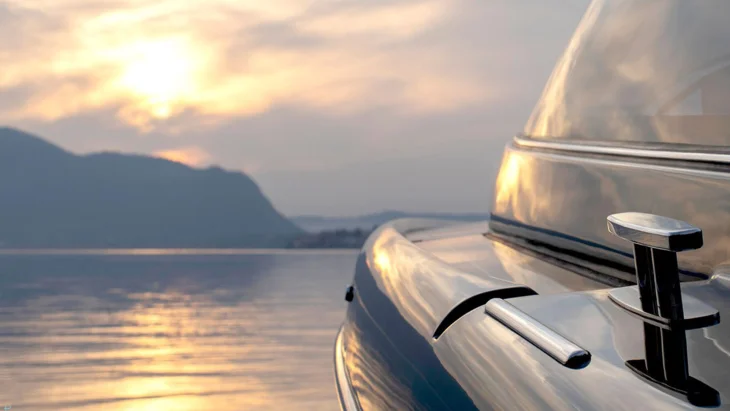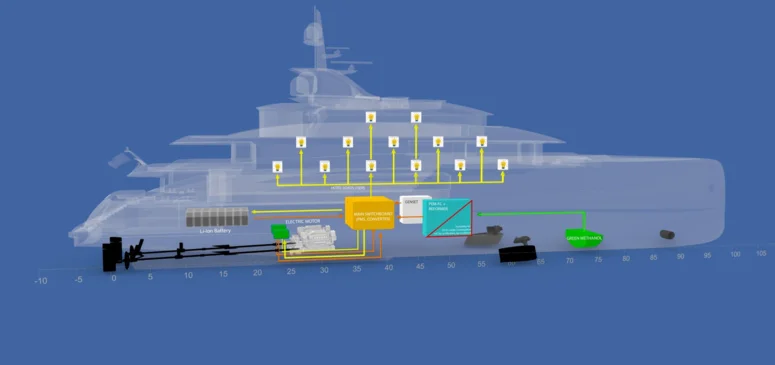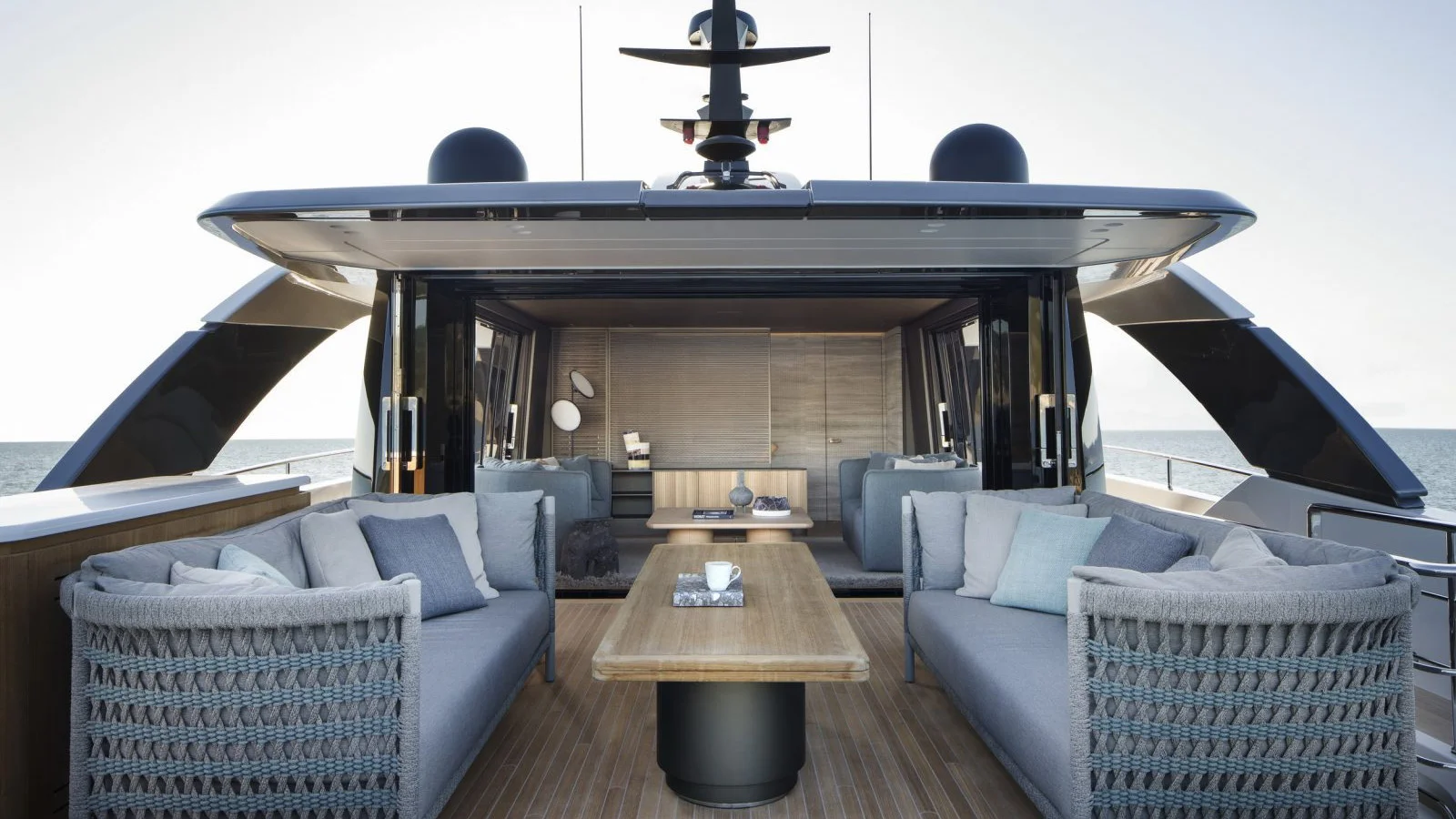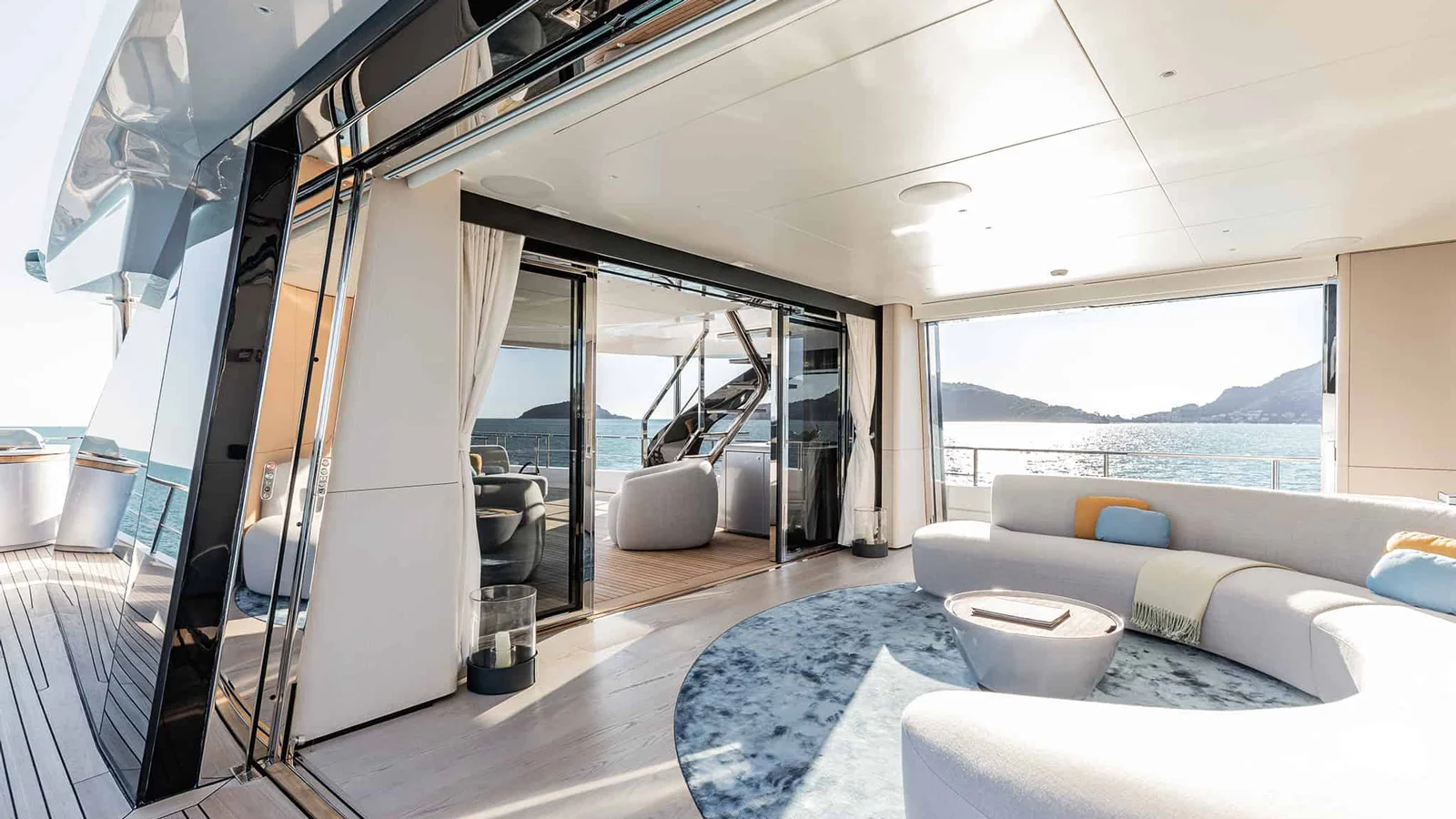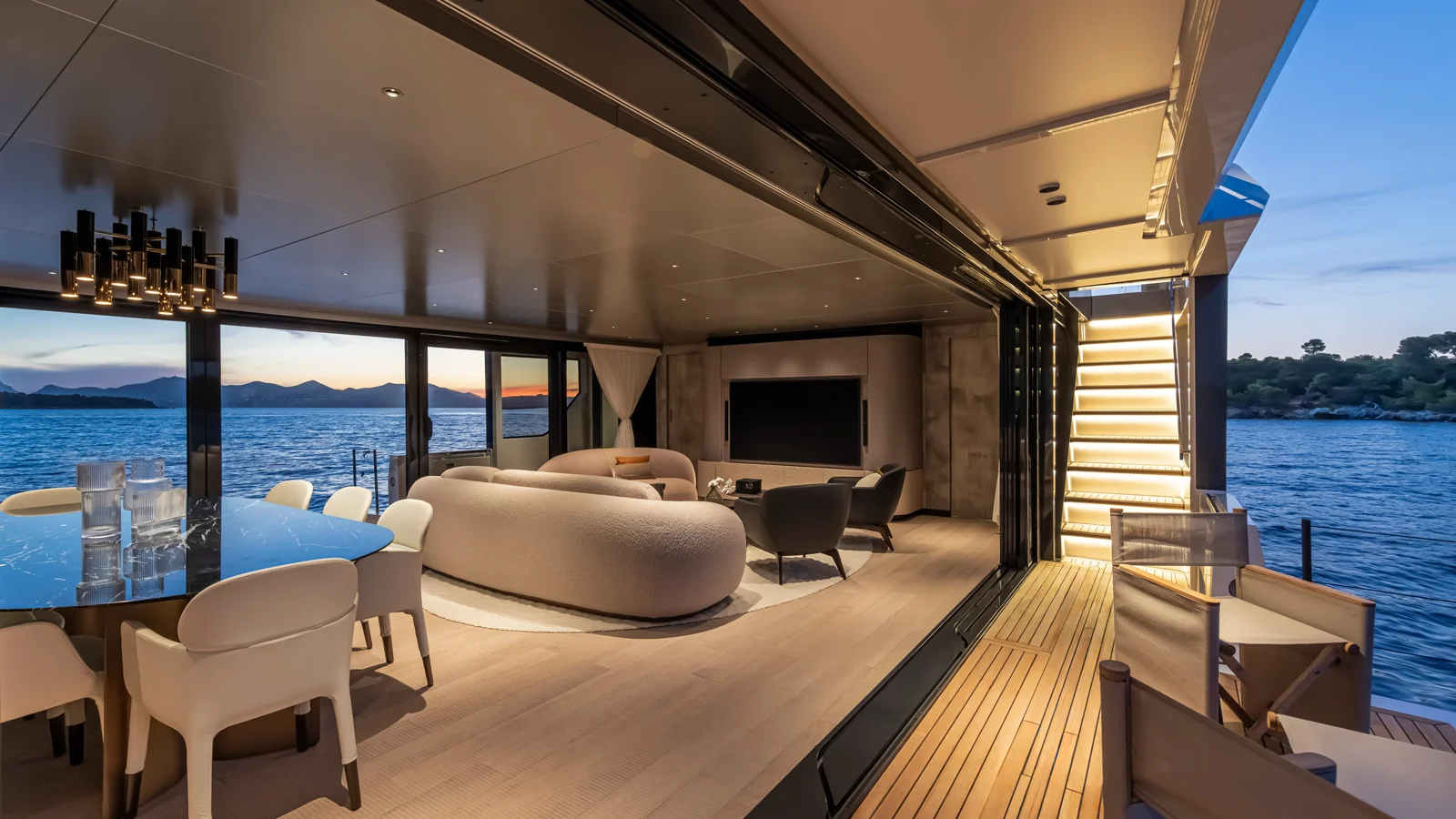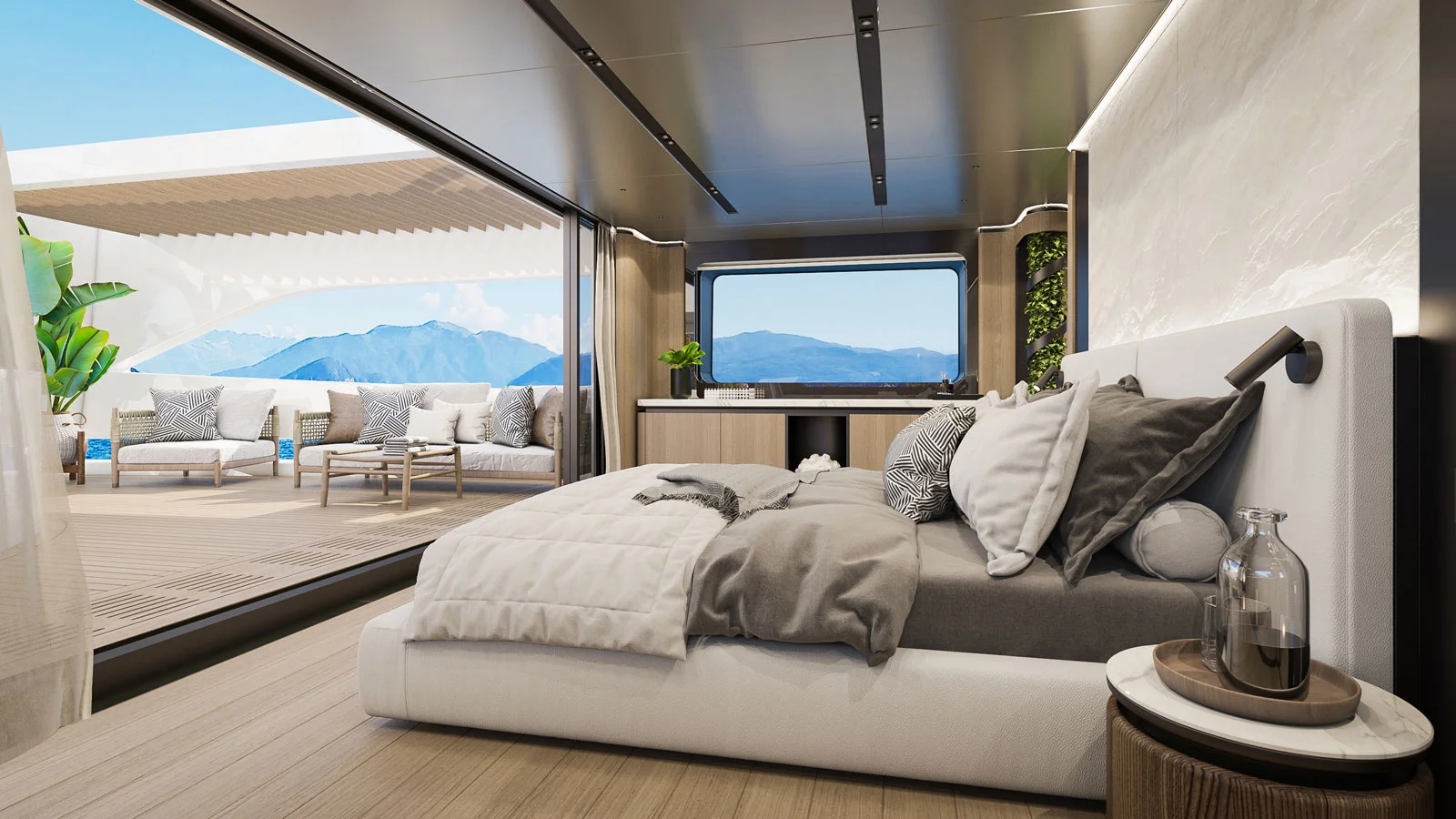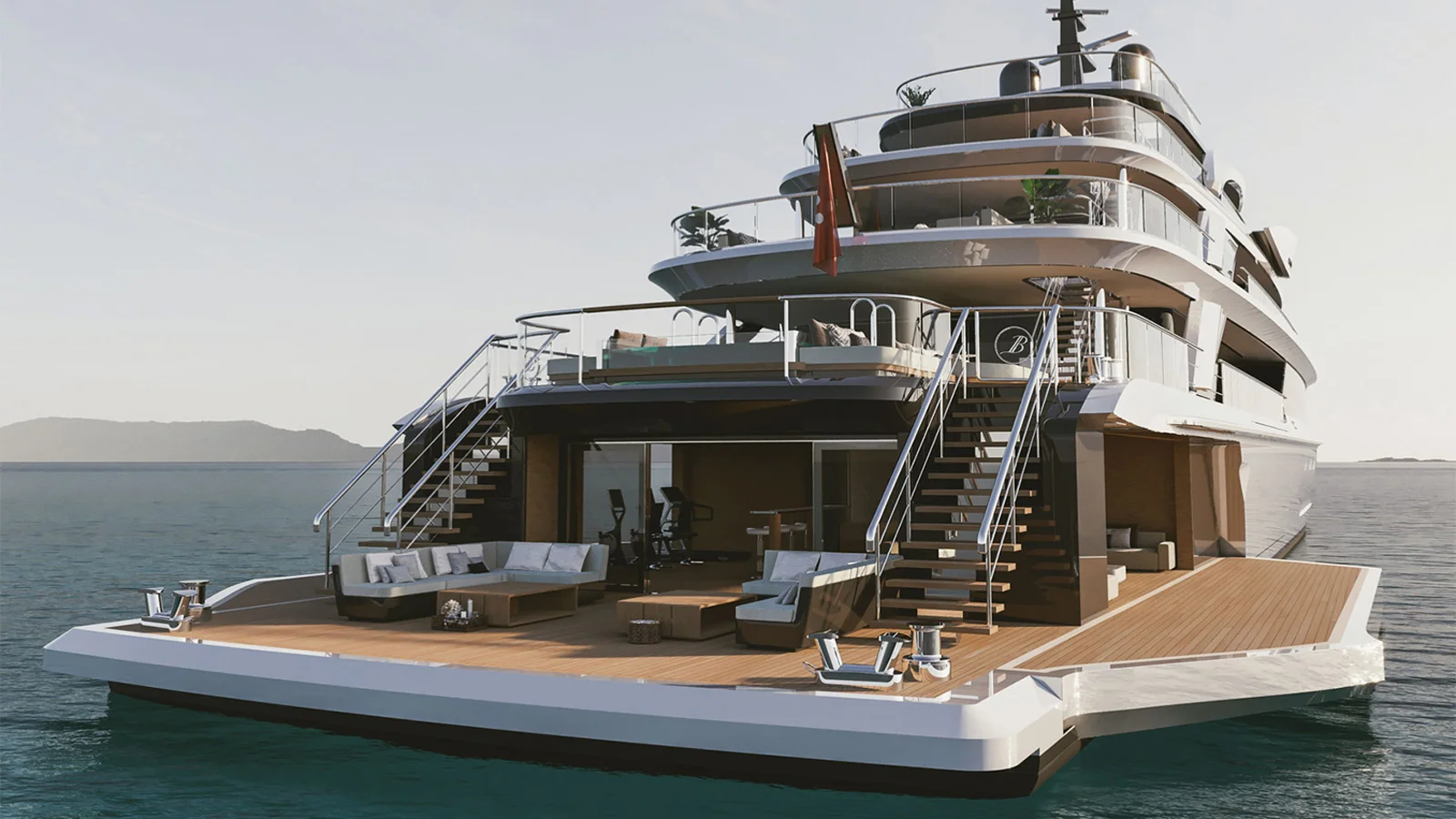Disappearing boundaries between yacht interior and exterior spaces
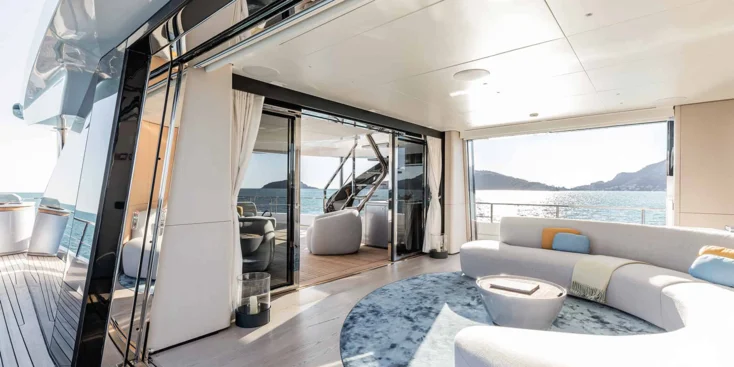
Permanent contact with the sea, an opportunity to admire unobstructed views, feel the breeze and be literally surrounded by the sea – that is what appeals to modern yacht owners
But at the same time, they want to feel protected and have an opportunity to hide or isolate themselves from the outer world without losing visual touch with it.
One of the trends that emerged recently is blurring the lines between the exterior and interior spaces. It is partly due to the influence of modern architecture with its ubiquitous use of large glass surfaces and sliding doors and windows. They allow one to unite a terrace or a balcony with a living room, thus turning the interior space into an exterior one.

Another obvious trend is that yachts start reminding houses on the water more and more. Cruises as such are no longer appealing. Owners are more interested in the opportunity to reach a cozy bay or an island and spend some time at anchor, swimming, sunbathing and enjoying the views around.
Both designers and owners have been happy with the existing division into interior and exterior areas. There was a flybridge or a cockpit lounge for those who wanted to relax outdoors. The aft section of superyachts was equipped with open recreation areas, let alone the sundeck that covered all the needs for al fresco recreation completely. In case of bad weather, one could find shelter in enclosed lounges and dining areas in the saloons. Why bother and invent something new?
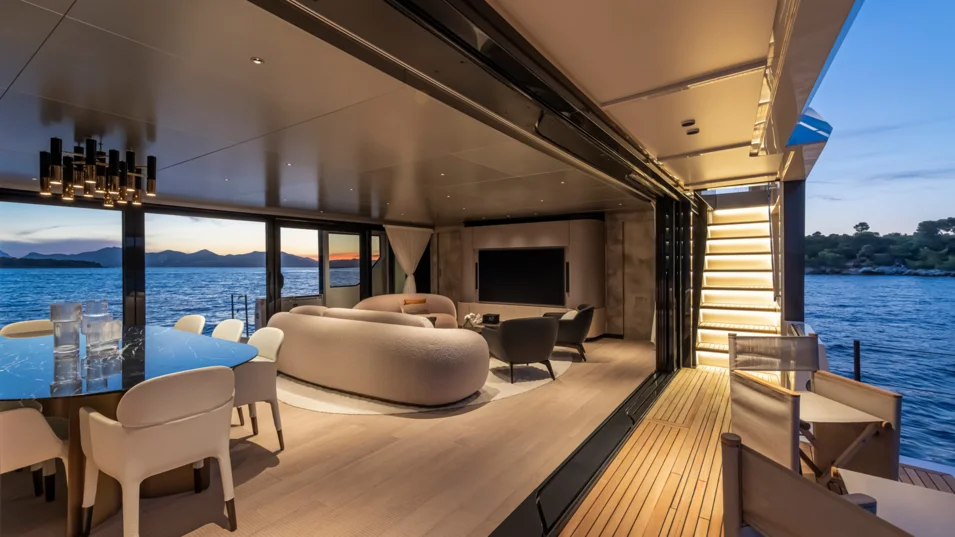
While the yachts over 40 metres have enough space for a comfortable arrangement of both interior and exterior areas, smaller vessels have to count each centimeter. And that is the reason designers suggested ‘blurring the lines’ – and, as we have already mentioned above, such solutions have long been applied in private houses.
It looks like now the division into interior and exterior areas that has existed for so long has been reversed in order to give the owners an opportunity to decide what kind of space they need at the moment with the help of sliding glass doors or windows. One of the notable examples of such transformations can be found on the Sunseeker Predator 65. However, other manufacturers apply such solutions, too.
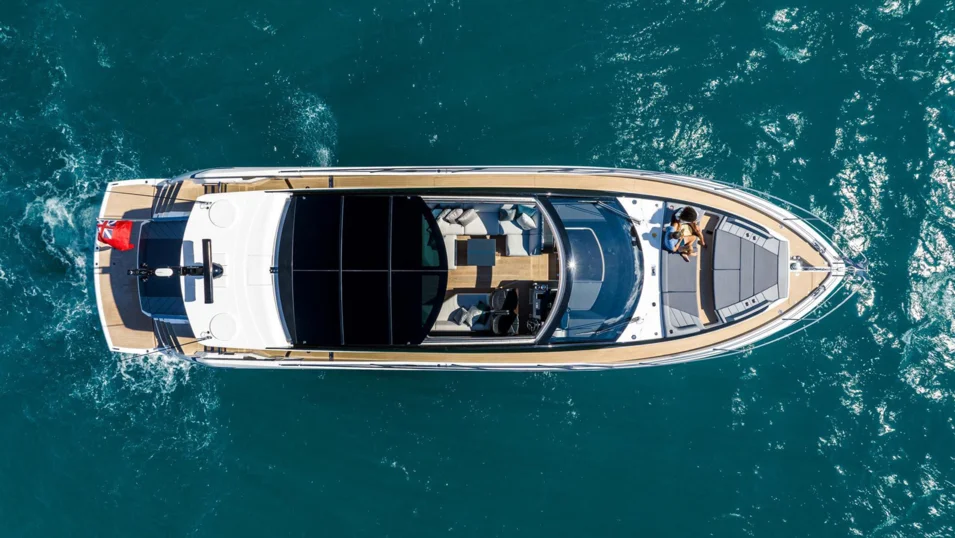
The ‘disappearance of boundaries’ on larger yachts can be found mainly in social areas: saloons on the main and upper decks. For example, the so called ‘sky lounges’ stop being exclusively interior spaces: large side and aft panels can slide and let in the sea breeze and all the sounds and smells of the sea. The saloon turns into a veranda open on one or a few sides like those on the Arcadia A96 or the Sanlorenzo SD96.
Moreover, sometimes you can close or open the top level completely, for example, a flybridge, with the help of automatically operated side windows. One of the first shipyards to apply this kind of solution was Italian Sanlorenzo with its SX crossover range.

Another area that wants ‘blurring the lines’ is the beach club. The bulwarks that fold down at anchor form side terraces at sea level and open the interior space that can be used as a lounge, a bar, a gym or a wellness area. This is mainly used by superyacht designers, and one can look at the Benetti B.Century 75М to see this approach realized to the full.
Another example for superyachts is the owner apartment with a private terrace located on upper levels, which can sometimes be opened to the sun and the wind, too. Turkish Sirena Yachts has used this on their Sirena 42M, the construction of which is currently underway. Depending on the location of the cabin, panoramic glass windows can open on one or a few sides, partly or completely.
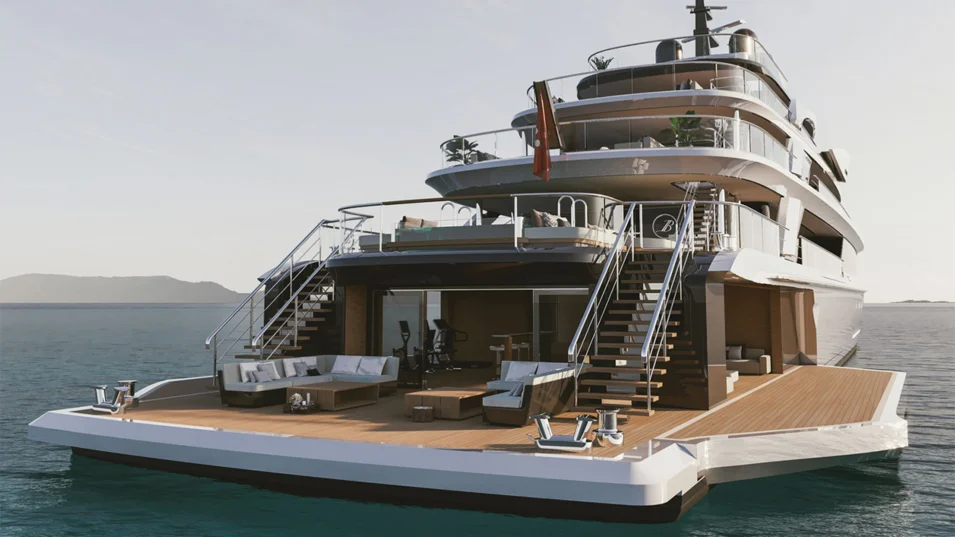
When unveiling their boats, shipyards tend to speak about the seamless integration of interior and exterior spaces, blurring the lines or transforming particular areas more and more often. And this trend seems to have become common for the whole industry and for almost any size range. So why not let the owner turn an interior space into an exterior one if they like?
You have successfully subscribed to our newsletter
